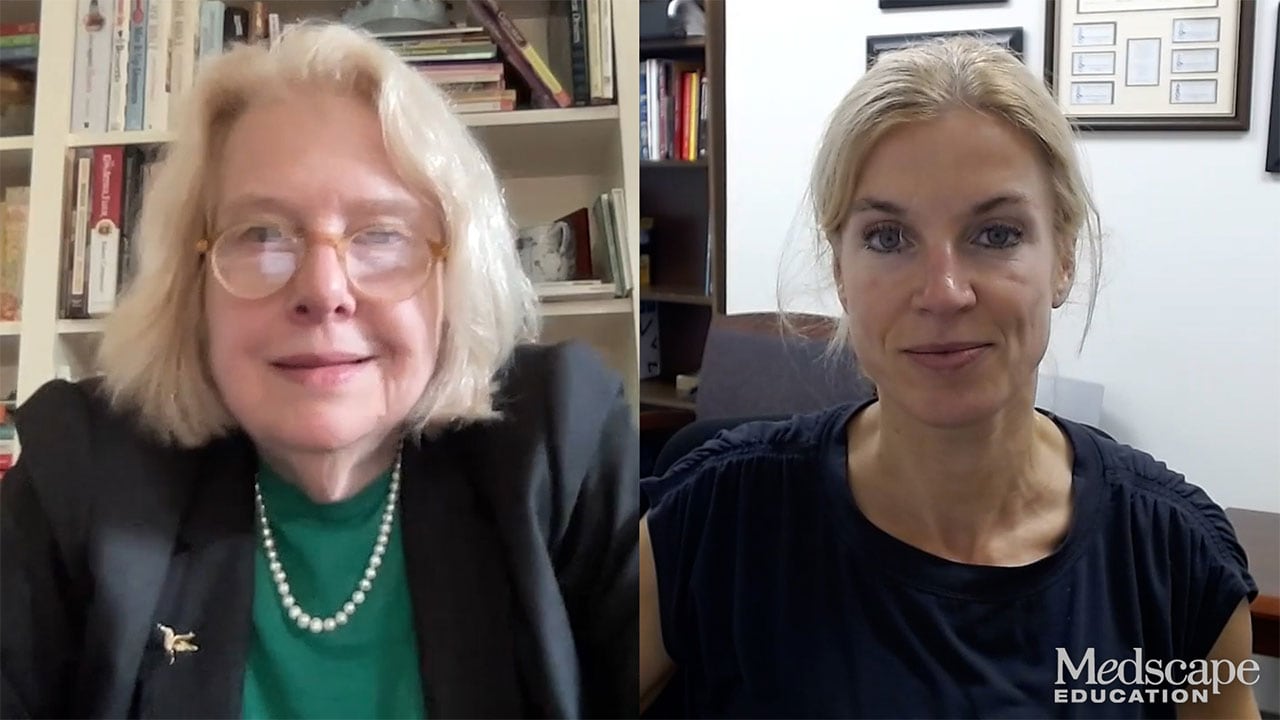This transcript has been edited for clarity.
Hello. I'm Andrew Kaunitz, professor and associate chair in the ob/gyn department, University of Florida College of Medicine in Jacksonville.
Today, I'd like to discuss follow-up of women with benign ovarian cysts.
Ovarian cysts are common. The great majority are benign, and more than three quarters of benign cysts will resolve over 5 or fewer years. For more than three decades, the University of Kentucky ovarian cancer screening trial has performed serial transvaginal ultrasounds (TVUS) at no charge on almost 48,000 women older than 30 years. Among these women, more than 2600 (5.5%) were found to have new ovarian cysts.
In a recent report published in Obstetrics & Gynecology (ACOG Green Journal), the Kentucky-based investigators described the trajectory of cyst resolution among women noted to have cyst with benign characteristics and point out factors associated with time to cyst resolution. These are:
Smooth thin walls
Lack of solid components or septations
Minimal, if any, blood flow when assessed with Doppler
In contrast, characteristics associated with cancer include:
Increasing cyst size
Presence of papillary or solid components
Irregularity of the ovarian mass
Presence of ascites, and
Abundant blood flow with Doppler
Two groups of asymptomatic women were enrolled in the trial, (1) postmenopausal women aged 50 years or older, and (2) premenopausal women at elevated risk for ovarian cancer due to family history, BRCA mutations, Ashkenazi heritage, or Lynch syndrome.
Women with normal TVUS findings were rescreened in 1 year. The mean follow-up time of trial participants was almost 8 years.
Among more than 40,000 women without cysts on initial TVUS, cysts were not subsequently identified in 93.5%, whereas new or incident cysts were identified in the remaining 6.5%.
Cysts resolved in almost two thirds of these women, leaving 971 women with persistent cysts. Among all incident cysts that ultimately resolved, median resolution time was 14 months, with almost two thirds resolving within 1 year.
Women whose cysts resolved were younger than were those without resolution, with mean ages of 53 and 57 years, respectively. Smaller cysts resolved more quickly. Median time to resolution according to size was:
≤ 3 cm: 1 year
3-6 cm: 1.6 years
≥ 6 cm: 3.5 years
With multivariate analysis, septated cysts were more likely to resolve than were simple cysts, and neither body mass index nor family history of ovarian cancer predicted time to cyst resolution.
Based on the median time to cyst resolution, the authors recommend that surveillance continue for 6 years simple cysts, 4 years for septated cysts as well as for cysts < 3 cm, 6 years for cysts 3-6 cm, and 14 years for cysts > 6 cm.
We have come a long way from the time when surgery was recommended for any postmenopausal woman found to have an ovarian cyst. Based on a unique database, the information in this article allows clinicians and patients to make evidence-based decisions regarding ongoing sonographic follow-up vs surgical management of women with benign-appearing ovarian cysts.
Follow Medscape on Facebook, X (formerly known as Twitter), Instagram, and YouTube
Medscape Ob/Gyn © 2023 WebMD, LLC
Any views expressed above are the author's own and do not necessarily reflect the views of WebMD or Medscape.
Cite this: Benign Ovarian Cysts: Will They Resolve Spontaneously? - Medscape - Dec 21, 2023.











Comments